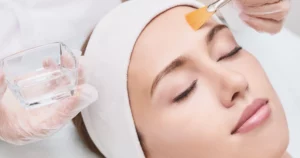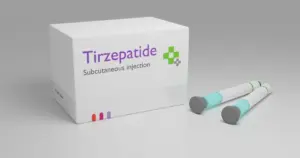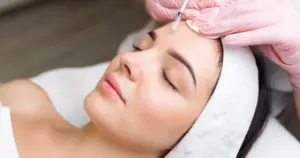Table of Contents
Collagen Induction Therapy, often known as microneedling, is a modern skincare treatment that leverages the body’s natural healing processes. Instead of relying on external products or invasive surgeries, this method stimulates the skin to repair itself, leading to a more youthful appearance. Its rise in popularity is attributed to its non-surgical nature and the minimal discomfort it causes. As individuals increasingly seek efficient and less invasive skincare solutions, Collagen Induction Therapy has become a preferred choice for many.
The Science Behind Collagen Induction Therapy
Collagen Induction Therapy, commonly known as microneedling, is rooted in leveraging the body’s innate healing mechanisms. The procedure involves using fine needles to create controlled micro-injuries on the skin’s surface. While this might initially sound counterintuitive, these micro-injuries serve a crucial purpose.
When the skin sustains an injury, even a minor one like the micro-injuries caused by microneedling, it undergoes three primary phases of wound healing: inflammation, proliferation, and remodeling.
- Inflammation: Immediately after the injury, the body initiates an inflammatory response. Blood platelets converge at the injury site, releasing growth factors. These growth factors attract immune cells to clean the wound and start healing.
- Proliferation: In this phase, fibroblasts (cells that produce collagen) are activated. They start building a new network of collagen fibers. This phase also sees the formation of a new network of blood vessels, a process known as angiogenesis, which ensures that the healing tissue receives adequate nutrients.
- Remodeling: The newly formed collagen network strengthens and reorganizes over time, making the skin firmer and more resilient. This is the phase where the visible benefits of CIT, like reduced wrinkles and improved skin texture, become most apparent.
The genius of CIT lies in its ability to induce these healing processes without causing significant damage to the skin. The micro-injuries are superficial, primarily affecting the epidermis and upper dermis. This ensures the healing process is rapid but profound enough to stimulate collagen and elastin production.
Benefits of Collagen Induction Therapy
Collagen Induction Therapy, a groundbreaking skincare approach, offers many benefits that cater to various skin concerns and desires. Here’s an exploration of its advantages:
- Reduction in Fine Lines and Wrinkles: As the skin’s collagen levels increase, there’s a noticeable reduction in fine lines and wrinkles, giving the skin a smoother and more youthful look.
- Scar Treatment: Collagen Induction Therapy has proven effective in reducing the appearance of acne scars and other types of scarring, making them less prominent over time.
- Improved Skin Texture and Tone: Regular treatments can enhance skin texture and a more even skin tone, addressing issues like roughness and discoloration.
- Minimized Pore Size: The therapy can help reduce the size of enlarged pores, leading to a more refined skin appearance.
- Enhanced Product Absorption: The micro-channels created during the procedure improve the skin’s ability to absorb skincare products. This means that serums, creams, and other products penetrate deeper, maximizing their benefits.
- Non-Surgical and Minimally Invasive: Unlike some cosmetic procedures that require surgery, Collagen Induction Therapy is minimally invasive, reducing potential risks and recovery time.
- Suitable for All Skin Types: The procedure can be tailored to suit various skin types and concerns, making it a versatile treatment option for diverse individuals.
- Long-Lasting Results: With proper skincare maintenance, the results of Collagen Induction Therapy can last for several months and, in some cases, even years.
Areas of Application
Collagen Induction Therapy, offered at One Eleven RX in Auburn, MA, is a versatile treatment that can be applied to various body parts, addressing many skin concerns. While the face remains a primary focus for many seeking this treatment, its application is not restricted to this area alone.
The therapy is effective on the forehead, targeting lines that often develop due to aging and repetitive facial expressions. The cheeks are another common area of application, where the procedure can enhance skin texture and address issues like scarring or uneven skin tone. Beyond the face, the neck and décolletage (upper chest area) are also treated to reduce signs of aging sun damage and to rejuvenate the skin’s appearance. Additionally, the hands, which often reveal signs of aging due to constant exposure to environmental factors, can benefit from the therapy, resulting in a more youthful and refreshed look.
Each treatment is personalized, ensuring that specific concerns are targeted effectively. Whether it’s addressing wrinkles on the forehead, uneven skin tone on the cheeks, or sun damage on the décolletage, Collagen Induction Therapy provides a tailored approach to meet individual skincare needs.
Who’s A Good Candidate?
Individuals keen on improving the appearance of lines, wrinkles, and acne scars are prime candidates for this treatment. Those desiring overall skin rejuvenation, enhancement, and a more youthful complexion can also benefit significantly from the procedure. The therapy is designed to stimulate the body’s natural healing response, making it an excellent option for those looking for non-surgical and minimally invasive solutions to their skin concerns.
Moreover, Collagen Induction Therapy is suitable for all skin types. Whether you have oily, dry, combination, or sensitive skin, the procedure can be tailored to address specific issues while ensuring the skin’s safety and health.
However, consult with a professional before undergoing the treatment. They can assess individual needs, skin conditions, and potential contraindications to determine if Collagen Induction Therapy is the right choice. It’s also crucial to have realistic expectations and understand that while the therapy offers noticeable improvements, results can vary based on individual factors.
How Long Do Dermal Fillers Last?
Dermal fillers are cosmetic treatments used to restore volume and smooth wrinkles. Their longevity varies based on the type of filler, treatment area, and individual factors. Hyaluronic acid fillers like Juvederm and Restylane commonly last 6 to 18 months, while others like Sculptra can extend up to two years. Areas with more movement, such as the lips, may see fillers dissipate faster. Individual metabolism rates and lifestyle choices, like sun exposure, also influence duration. For sustained results, periodic touch-ups are recommended.
Takeaway
At One Eleven RX, we prioritize your skin’s health and appearance. Our array of advanced skincare treatments caters to various concerns, ensuring each client receives a solution tailored to their needs. With a focus on practical and lasting results, our experienced team is dedicated to providing safe and impactful treatments. If you’re considering enhancing your skincare routine or addressing specific concerns, then explore what One Eleven RX offers. Contact or book a consultation with us today to learn more about our services and how we can assist you in achieving your skincare goals.






